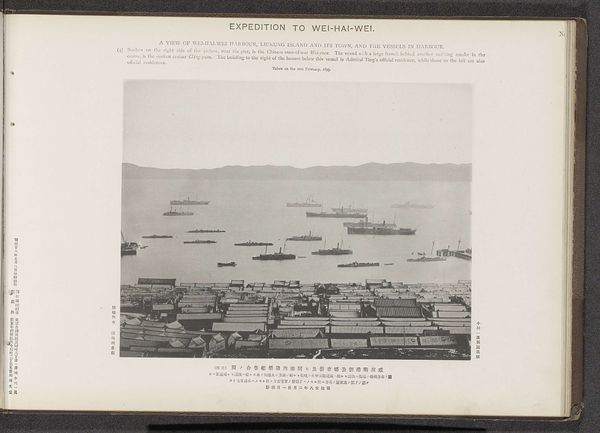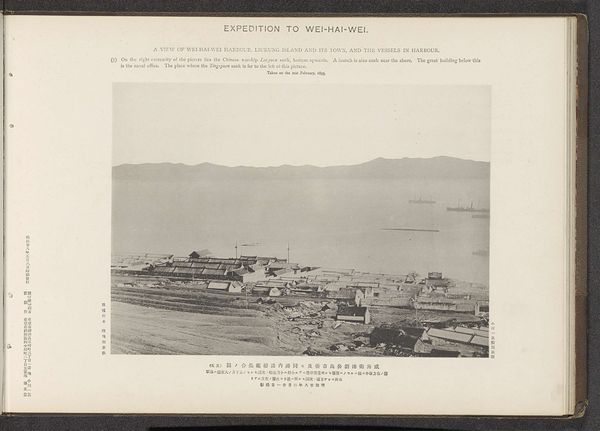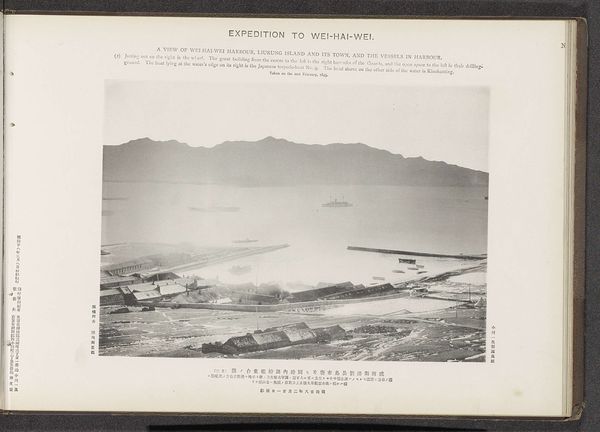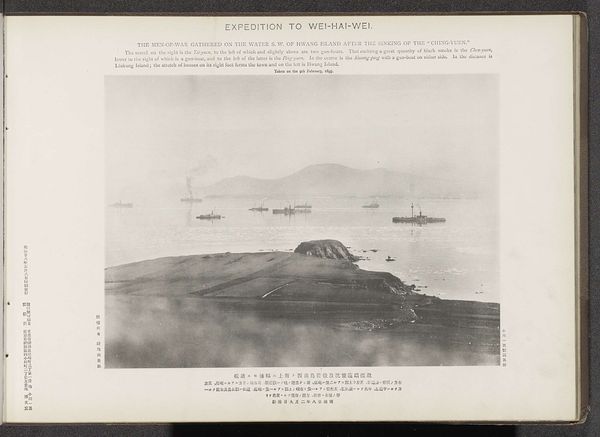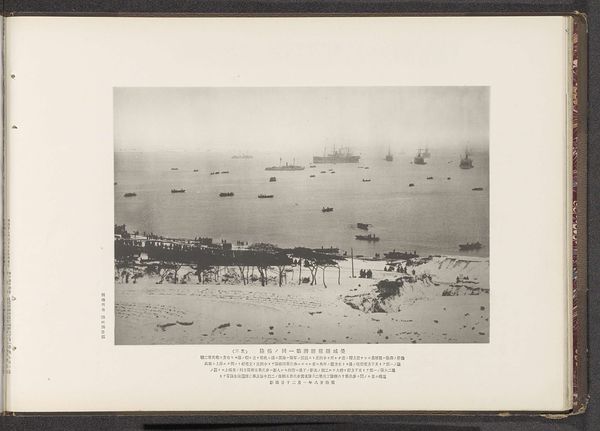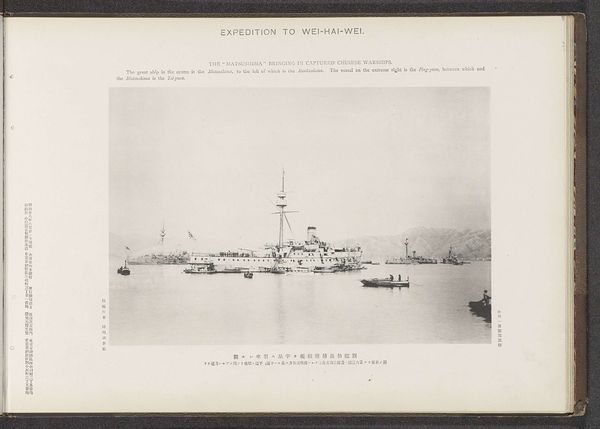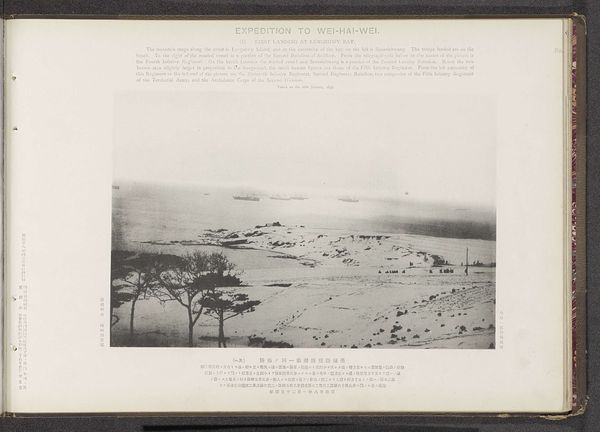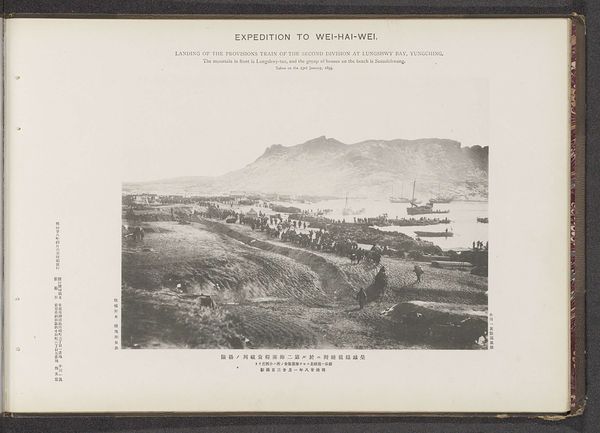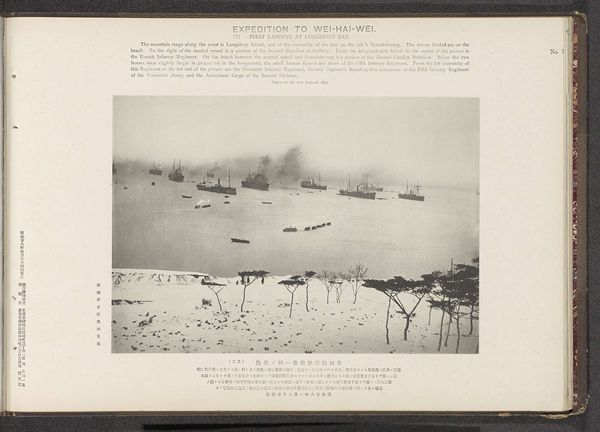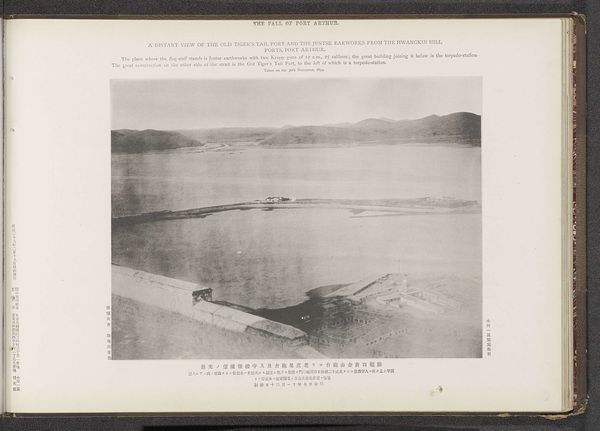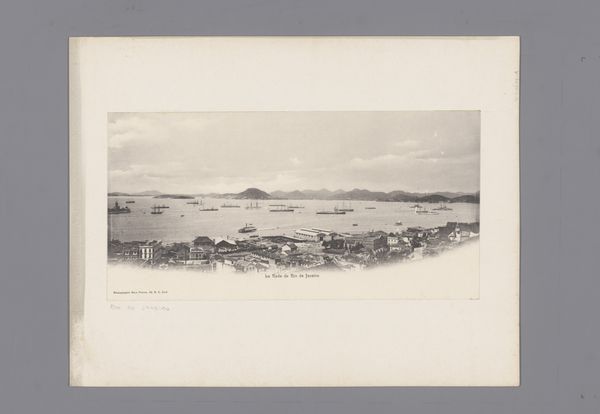
A view of Wei-Hai-Wei harbour, Liukung Island and its town, and the vessels in harbour Possibly 1895
0:00
0:00
print, photography, gelatin-silver-print
# print
#
landscape
#
photography
#
orientalism
#
gelatin-silver-print
#
cityscape
Dimensions: height 205 mm, width 272 mm
Copyright: Rijks Museum: Open Domain
Editor: This gelatin-silver print, possibly from 1895, depicts “A view of Wei-Hai-Wei harbour, Liukung Island and its town, and the vessels in harbour,” attributed to the Ordnance Survey Office. The composition feels very ordered, almost sterile, despite the subject matter. What strikes me most is the implied labor involved in creating this seemingly simple image. How do you interpret the means of its production and its context? Curator: Considering the materials, a gelatin-silver print points us directly to industrial processes – the organized production of photographic materials, the specialized labor in developing and printing. Before us we have not just a cityscape, but the visible outcome of a complex network of industry, colonialism, and knowledge production under the guise of geographic survey. Editor: That's a great point about knowledge production! So the act of surveying and photographing becomes another form of labor imposed on this place, Wei-Hai-Wei... Curator: Precisely! Think about who would commission such a photograph, and what purpose it served. Not merely a record of a place, but a visual inventory of resources, potential, and strategic advantage in a specific socio-political climate. Photography, then, becomes a tool inseparable from imperial ambitions. Consider also the skilled labor required versus who benefits from its circulation. Editor: So by examining the gelatin-silver print, we see not just a view but the entire machinery of empire in action. It changes my perspective entirely! Curator: Exactly! Thinking through materials pulls back the curtain on so much invisible labor and systemic influence. I hope it has also demonstrated how thinking about materiality challenges this presumed separation of craft and "high" art. Editor: Absolutely. I’ll definitely be looking at things differently from now on.
Comments
No comments
Be the first to comment and join the conversation on the ultimate creative platform.
